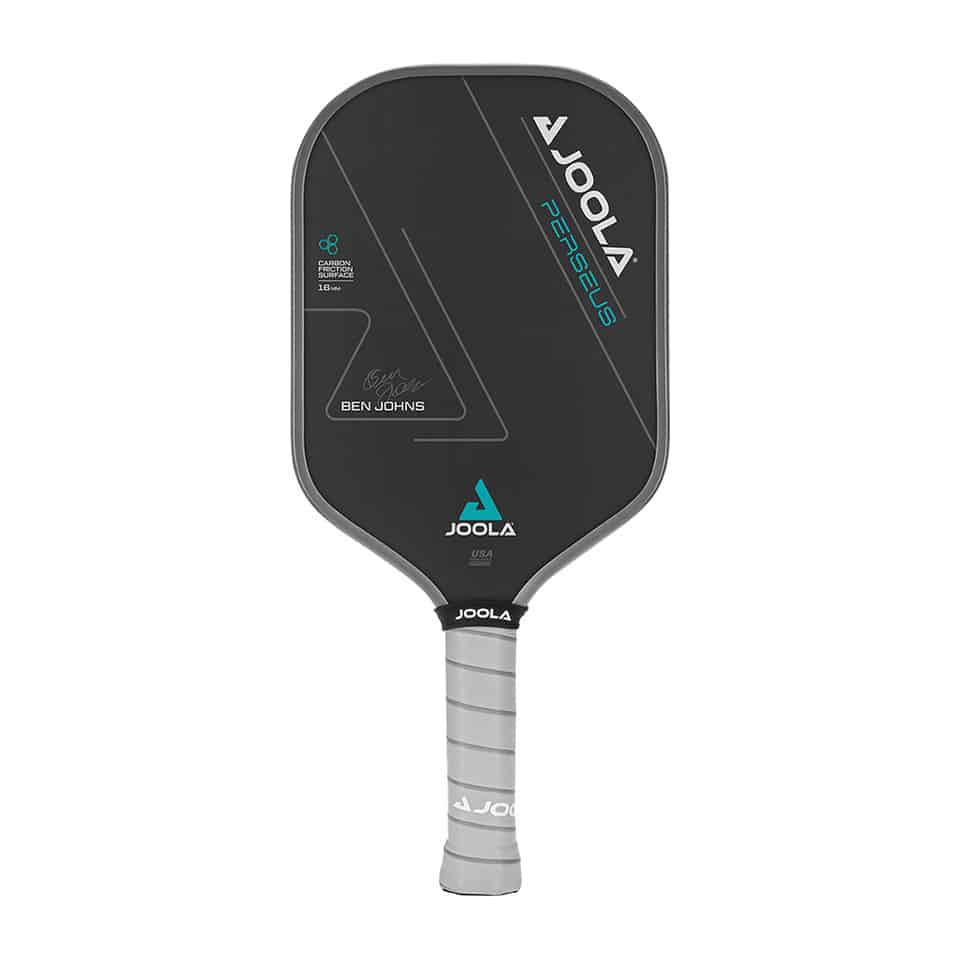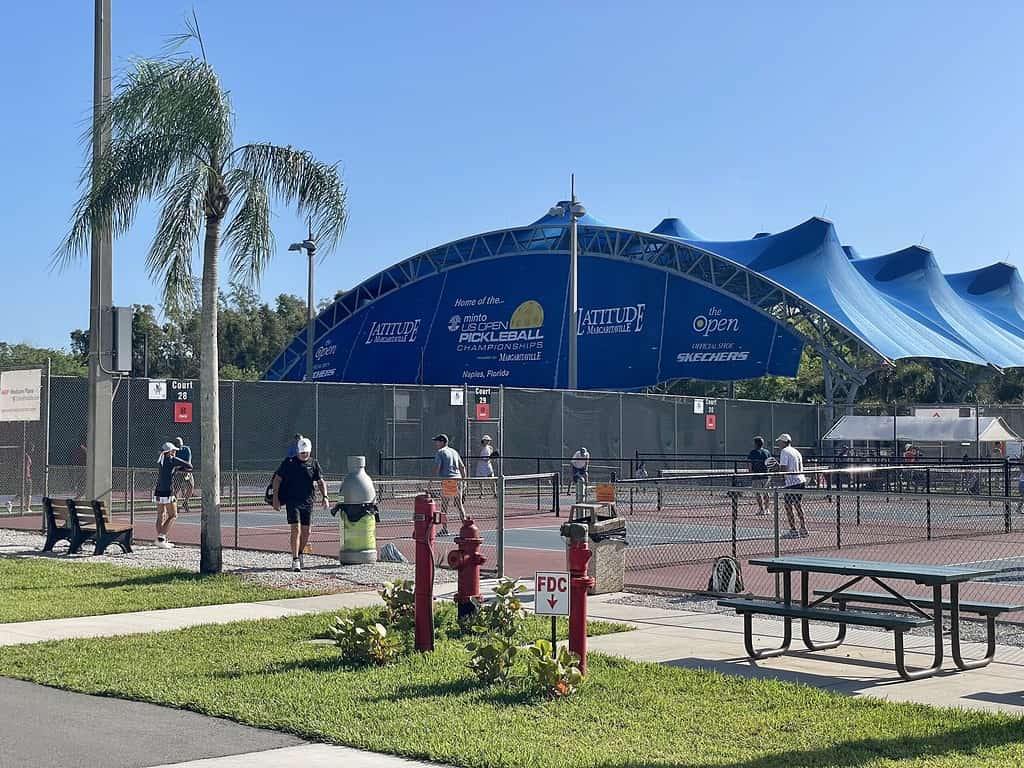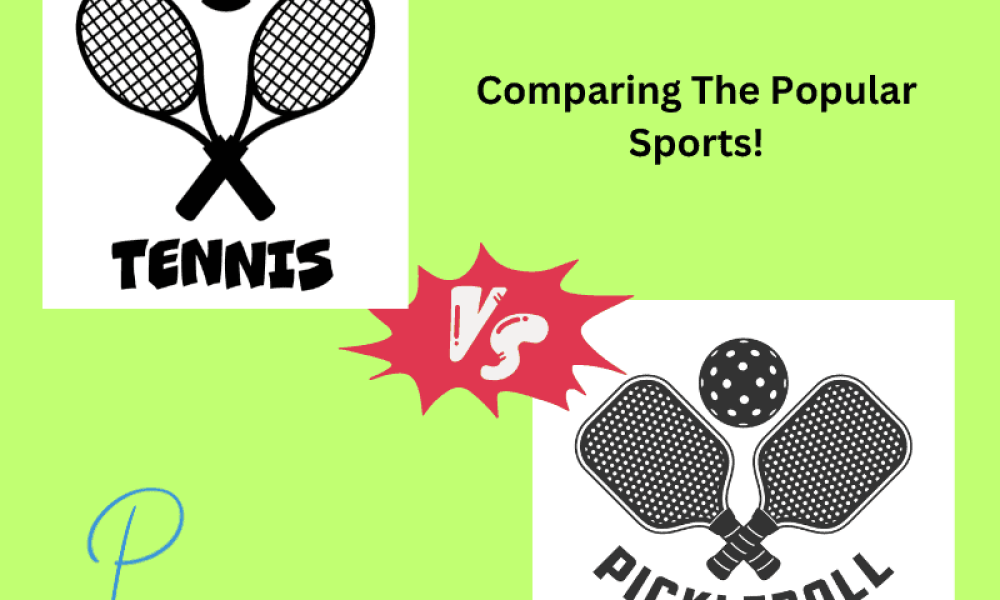Pickleball has been taking the world by storm, with many tennis players finding themselves drawn to this exciting new sport.
In recent years, with the popularity of pickleball surging, it has sparked debates and discussions among racket sports enthusiasts creating a pickleball vs tennis culture.
But what exactly sets these two sports apart, and what common ground do they share?
In this blog post, we look into the fascinating world of pickleball vs tennis, examining their origins, equipment, gameplay, and more. By the end, you’ll have a thorough understanding of the unique characteristics of each sport, and you might even be tempted to try your hand at both!
Let’s get started.
Pickleball vs Tennis: The Origins and Evolution
The histories of pickleball and tennis are as distinct as the sports themselves. While tennis has a rich history dating back centuries, pickleball is a relatively recent invention with roots in badminton and table tennis. The two sports have evolved differently over time, with pickleball experiencing rapid growth in popularity among a wide range of ages and skill levels.
Despite their differences, the gameplay of pickleball and tennis shares certain elements, such as the importance of shot placement and strategy. This has led to many tennis players transitioning to pickleball, even playing on adapted tennis courts. But to truly understand the unique aspects of each sport, we must delve deeper into their origins and development.
The Birth of Pickleball
Pickleball was invented in 1965 by two fathers from a Seattle suburb who sought to create a fun game for their children. Combining elements of badminton, table tennis, and tennis, they crafted a sport that could be played on a small court with simple equipment like a solid paddle and a perforated plastic ball. The game quickly gained popularity in the local community, and by 1990, it had spread to all 50 states.
The name “pickleball” was coined by Joan Pritchard, wife of one of the game’s inventors, Joel Pritchard. The term is an allusion to the leftover non-starters in the ‘pickle boat’ of crew races. Since its inception, the game has grown in popularity, attracting pickleball players of all ages and skill levels.
With its easy access and engaging gameplay, it’s no wonder that pickleball has become the fastest-growing sport in the United States.
The Evolution of Tennis
Tennis, on the other hand, has a much longer history. The sport can be traced back to a French game called Jeu de Paume in the 12th century. Over time, Jeu de Paume evolved into Real Tennis, a more complex game played on closed courts with inclined walls and a roof. It wasn’t until the 19th century that lawn tennis, the modern version of the game, began to take shape.
Major Walter Clopton Wingfield is credited with creating early nets and rackets, promoting the game among the aristocracy. Major Harry Gem and Augurio Perera, two English athletes, created a variation of the game they had been playing on a croquet lawn. This version became popular among their close circle of friends. They later helped establish the world’s first lawn tennis club, solidifying the foundation of the modern sport we know and love today.
Pickleball vs Tennis: Contrasting Court Dimensions

One of the most striking differences between pickleball and tennis is the size and layout of their courts.
A standard tennis court is nearly three times the area of a pickleball court, measuring 78 feet by 36 feet, while pickleball courts measure just 44 feet by 20 feet. This difference in size has a significant impact on how the games are played and the strategies employed by players.
To better understand how the dimensions and layouts of pickleball and tennis courts influence gameplay, let’s take a closer look at the unique features of each court.
Pickleball Court Features

A pickleball court is approximately the same size as a badminton court, measuring 20 feet by 44 feet. One of the most distinctive features of a pickleball court is the non-volley zone or “kitchen.” This area, located adjacent to the net, prohibits players from executing volleys while any part of their body is within the zone. The kitchen rule was implemented to prevent players from taking advantage of the small court size and executing powerful shots from the net.
The net in pickleball is approximately 3 feet high, which is slightly lower than a tennis net. Because the ball used in pickleball is like a wiffle ball, players must swing with greater force than in tennis to generate pace on the ball when it is close to them. This difference in equipment and court size creates a unique playing experience for pickleball enthusiasts.
Tennis Court Features

In contrast to the smaller pickleball court, a tennis court is much larger, measuring 78 feet long and 27 feet wide for singles matches, and 36 feet wide for doubles matches. The tennis court is divided into several sections, including the service boxes, doubles alleys, and baselines.
A tennis net is 42 inches high at the posts and 36 inches high in the center, making it taller than a pickleball net. The larger court size and higher net in tennis require players to cover more ground and generate more power in their shots, making the sport more physically demanding than pickleball. Tennis nets play a crucial role in the dynamics of the game.
Equipment Differences: Paddles vs Racquets and Balls
Another significant difference between pickleball and tennis lies in the tennis equipment used by players. While both sports involve hitting a ball with a racket or paddle, the specific equipment used in each sport has a substantial impact on gameplay and strategy.
In this section, we will examine the key distinctions between pickleball paddles and tennis racquets, as well as the differences between pickleballs and tennis balls used in each sport.
Pickleball Paddles and Pickle Balls


Pickleball paddles are solid and rectangular, similar in size and shape to ping pong paddles. They are typically half the length of a tennis racquet, have shorter handles, and exhibit different behaviors when impacting the ball. The average weight of a pickleball paddle is around 7.5 ounces.
The ball used in pickleball is a hollow plastic ball that looks like a wiffle ball with holes in it. There are two types of pickleballs: indoor and outdoor. Outdoor pickleballs have smaller holes to minimize the impact of wind on the ball’s trajectory. The lightweight, perforated design of the ball requires players to generate more force in their swings compared to tennis.
Tennis Racquets and Balls
Tennis racquets, on the other hand, are larger and feature strings that create a spring-like mechanism when they make contact with the ball. This allows for a greater range of shot types and spin variations compared to the solid surface of a pickleball paddle. Popular tennis racquets used by professionals include the Babolat Pure Drive, Wilson Blade 98, Head, and Yonex.
A tennis ball is made of rubber and covered with felt, providing a softer, more flexible playing experience compared to the hard plastic wiffle balls used in pickleball. The different ball types result in a unique playing experience for each sport, with tennis balls offering more bounce and spin potential than pickleballs.
Gameplay and Scoring Variations
In addition to differences in court dimensions and equipment, pickleball and tennis also feature distinct gameplay and scoring systems. While the two sports share some similarities, such as the importance of shot placement and strategy, their unique rules and formats create diverse playing experiences for athletes and enthusiasts alike.
To better understand how to play pickleball and tennis, let’s explore the specific rules and strategies that set each sport apart.
Pickleball Gameplay and Scoring

Pickleball is primarily played as doubles, with two players on each side of the court. The non-volley zone or “kitchen” rule is a key aspect of pickleball gameplay, preventing players from executing powerful shots at the net. The scoring system in pickleball consists of games played to 11 points, with a two-point margin of victory required.
Another unique aspect of pickleball is the two-bounce rule. After a serve, the returning team must let the ball bounce once before hitting it back over the net. Similarly, the serving team must also let the ball bounce once before returning it again. This rule encourages longer rallies and strategic shot placement, as opposed to power-hitting.
Tennis Gameplay and Scoring
Tennis can be played as singles or doubles, with the larger court size and higher net demanding more physical exertion from players. Serving plays a crucial role in tennis strategy, with players utilizing various techniques such as spin, speed, and placement to gain an advantage over their opponents.
The scoring system in tennis is more complex than in pickleball. Points are scored as 0, 15, 30, and 40, with the first player to accumulate 4 points winning a game. The first player to win 6 games wins a set, and a player must win 2 sets to claim victory in a match. This scoring system adds an additional layer of strategy and intensity to the game of tennis, setting it apart from the more straightforward scoring system of pickleball.
Accessibility and Appeal: Why Players Choose One Sport Over the Other
The accessibility and appeal of pickleball and tennis play a significant role in why players may choose one sport over the other. Pickleball, with its smaller court size and simpler rules, has a lower barrier to entry and can be enjoyed by people of all ages and skill levels. The sport’s social aspect, with open-play formats and post-game gatherings, also contributes to its growing popularity.

Tennis, while more physically demanding, offers a challenging and rewarding experience for those willing to put in the time and effort to develop their skills. The sport’s long history and prestigious events like the Grand Slam tournaments add an element of prestige that attracts many players.
Ultimately, the choice between pickleball and tennis may come down to personal preference, physical fitness, and the desire to play pickleball or have a specific tennis playing experience.
Transferring Skills from Tennis to Pickleball
Many tennis players have found success in transitioning to pickleball, as several skills developed in tennis can be applied to the newer sport. Techniques such as groundstrokes, court positioning, spin comprehension, footwork, shot selection, and strategy are all transferable between the two sports.
Ex-tennis pros who have made the switch to pickleball have reported that their tennis skills have been beneficial in mastering the game of pickleball. This transferability of skills has contributed to the growing popularity of pickleball among tennis players, as they can enjoy a new sport without starting from scratch in terms of skill development.
The Growing Popularity of Pickleball and Its Impact on Tennis Communities
The rapid rise in popularity of pickleball has had a noticeable impact on tennis communities. As more people take up the sport, tensions have arisen between pickleball and tennis clubs, with some advocating for prohibitions on pickleball altogether.
Despite these potential conflicts, there are also opportunities for pickleball and tennis to coexist harmoniously. Some tennis clubs have embraced pickleball, offering both sports to their members and fostering an inclusive environment for racket sports enthusiasts of all types. By finding ways to accommodate both sports, clubs and communities can benefit from the growth of pickleball while still supporting the traditions of tennis.
Noise Concerns and Mitigation Strategies
One issue that often arises in discussions about pickleball is the noise generated by the sport. The “pop” sound produced when the paddle strikes the wiffle ball can be more intrusive than the sound of a tennis racquet hitting a soft tennis ball. This has led to concerns about noise pollution, particularly in residential areas where pickleball courts are located.
To address these concerns, various strategies have been employed, such as erecting sound barriers near residential areas, using quieter paddles and balls, and regulating playing hours. By implementing these measures, communities can enjoy the benefits of pickleball while minimizing the impact of noise on surrounding residents.
Summary
In conclusion, tennis and pickleball each offer unique playing experiences, catering to different preferences and skill levels. From their distinct origins and court dimensions to their contrasting equipment and gameplay, these two sports provide diverse opportunities for athletes and enthusiasts alike.
While the growing popularity of pickleball has led to some tensions with tennis communities, there is ample room for both sports to coexist and thrive. By understanding the unique aspects of each sport and embracing the opportunities they provide, players can enjoy the best of both worlds and continue to foster a love for racket sports.
Frequently Asked Questions
Why do people like pickleball more than tennis?
People prefer pickleball over tennis due to its slower-paced, more accessible nature. The smaller pickleball court size means players don’t have to cover as much ground, making it suitable for a wider range of ages.
It’s also easier to learn and can be safer for those with heart issues. With the combination of fun and practicality, it’s no wonder why people love pickleball!
Can pickleball be played on a tennis court?
Yes, pickleball can be played on a tennis court. The sport is very similar to tennis and uses the same court size and layout with a few minor adjustments.
If you have access to a tennis court, you’re all set for a great pickleball game.
Why is pickleball popular?
Pickleball is becoming increasingly popular due to its accessibility, playability and unique combination of rules. It is a low impact game that can be played by people of all ages, from children to seniors.
The court size is smaller than tennis, making it easier to move around, while the ball moves at a slower speed, allowing for longer rallies. This makes pickleball an enjoyable and accessible game for all levels.
What is the main difference between pickleball and tennis courts?
The most notable difference between pickleball and tennis courts is the court size; pickleball requires a much smaller area.
How do pickleball paddles differ from tennis racquets?
Pickleball paddles are more lightweight and have a larger sweet spot compared to tennis racquets, which tend to be heavier and have a smaller sweet spot.


